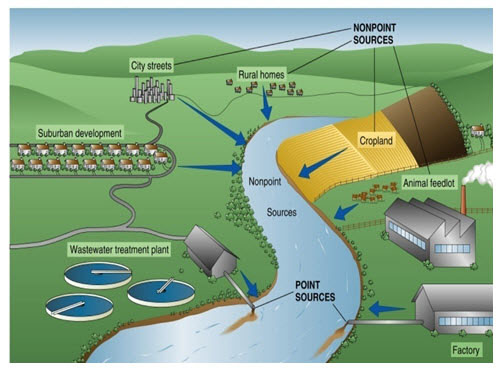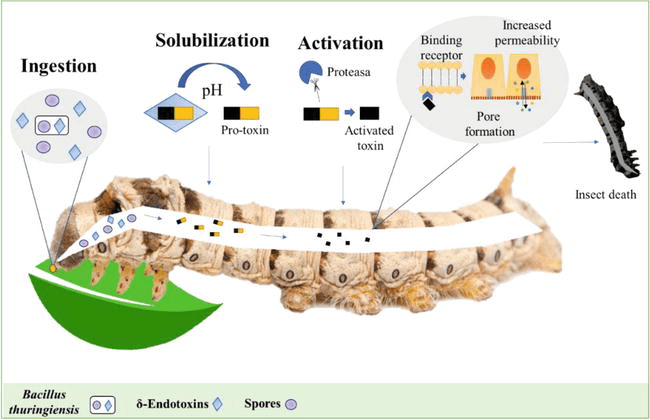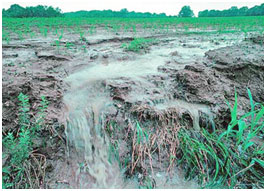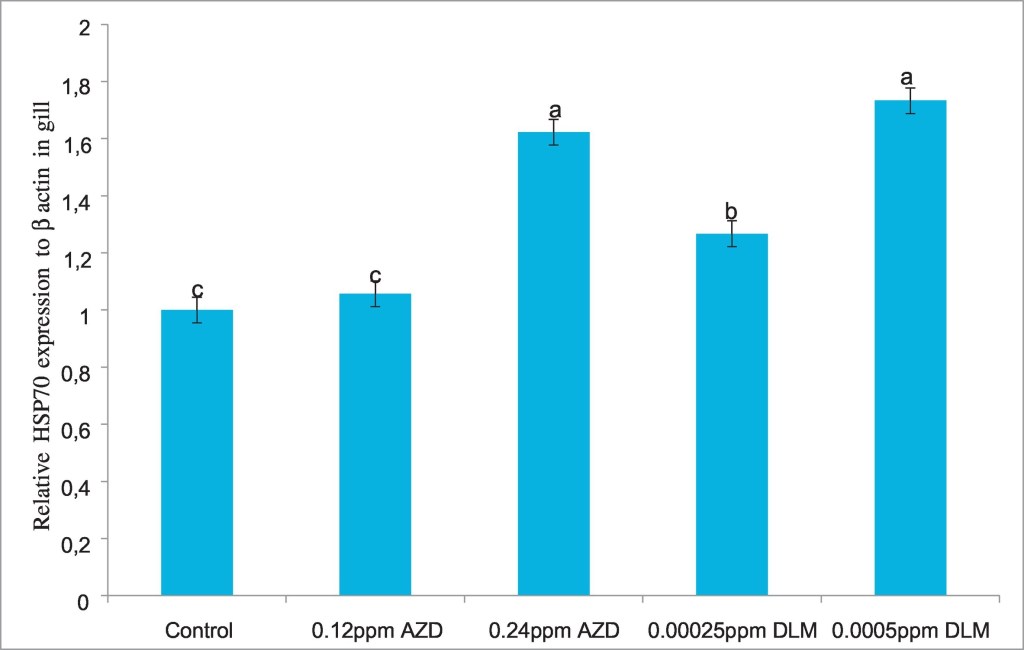By: Dana Sackett, PhD
Aquatic environments are frequently the eventual, albeit-it often unintentional, receptacle for pollutants released by human activities. While the adage ‘it always rolls downhill’ is meant to be facetious, in practice, wastewater effluent discharge, stormwater run-off, and agricultural runoff (including pesticides) do wash downstream into our aquatic ecosystems. Aquatic organisms are also often sensitive to pollutants because they rely on exchanges with water for oxygen and food. This can lead to aquatic organisms being continually exposed to the mixture of pollutants that pour into waterbodies. Historically, pesticides have been notably harmful because they are compounds made with the purpose of harming or killing a pest and can have similar harmful actions on aquatic organisms. These impacts are particularly egregious if the pesticide is persistent, taking a long time to degrade. This persistence allows the pesticide to run-off into aquatic habitats, where it can build-in concentration over time, increasing the likelihood it will cause harm to the aquatic environment.

Using chemicals to control different pest species, such as weeds, pathogens, insects, rodents, and even fish has been a time-honored tradition for humans for centuries. Initially pesticides were natural biproducts from the environment used to control a destructive or nuisance pest. For instance, in the early 17th century plant extracts were likely some of the earliest agricultural pesticides to protect crops. However, since the 1940s synthetic chemical pesticides have been the basis of pest control. This change to primarily using synthetic chemicals was born out of a need for more effective, long-lasting pesticides to protect the agricultural food resources for the ever-expanding human population. These synthetic pesticides were also used to combat pest-related diseases (such as malaria). Initially, the longevity of these synthetic pesticides in the environment was viewed as a huge benefit.

However, the eventual near uninhibited use of these synthetic chemical pesticides led to numerous and often unforeseen long-term impacts in our environment. Some of these impacts included polluted aquatic ecosystems and groundwater, degraded soils, contaminated fish, wildlife and food supplies, and adverse health effects for numerous organisms. It was some of these destructive effects that were highlighted in Rachel Carson’s infamous book “Silent Spring,” that is often attributed with the development of the United States Environmental Protection Agency. Although many of these original synthetic pesticides were phased out decades ago, the fact that some still exist in our environment today is a reminder of how persistent many synthetic compounds can be (for more on this see our article on legacy pollution).

Despite more stringent pesticide regulations enacted in the last several decades, environmental and health concerns from synthetic chemical pesticides remain. As a result, many countries around the world are moving toward replacing some of these synthetic products with biopesticides. These are defined as products used to control pests, pathogens, and weeds that are derived from natural materials such as animals, plants, microorganisms, and minerals. Because these products are naturally-derived they biodegrade quickly in the environment, reducing concerns of long-term contamination and decreasing the chances of chemical concentrations rising to harmful levels in aquatic ecosystems.

It is important to note that just because a substance is natural does not mean it is safe. Indeed, some of the most poisonous substances on earth are naturally made by living organisms. One only has to do a quick google search on botulinum toxin, eat a macaroni salad that has sat outside for too long on a hot day, or experience a venomous animal bite or sting to realize that not all natural substances are harmless. Indeed, one widely used natural insecticide, pyrethrum, is produced by certain chrysanthemum flowers and is known to be a potent neurotoxin. Thus, it is vital that each biopesticide used for the purposes of controlling a pest still undergo an evaluation of risk to our ecosystems and people before being registered for use in our environments. This process is conducted by the EPA in the United States.

Three types of biopesticides recognized today are microbial biopesticides, plant-incorporated protectants, and biochemical biopesticides. Microbial biopesticides are the most common, using microorganisms (such as bacteria, fungus, protozoa, and others) as the active ingredient. Using microorganisms for our own benefit is nothing new. Indeed, we have used microorganisms for other beneficial purposes for hundreds of years: antibiotics, alcohol, and bread being just a few examples. One of the most common microbial biopesticides are a group of bacteria that commonly inhabit soil called Bacillus thuringiensis or more commonly Bt. Bt produces a toxin that is specifically harmful to larval insect pests of several crops, leaving nearly all non-target species unharmed.

Plant-incorporated protectants are the second type of biopesticide. These products involve incorporating the DNA instructions on how to make the natural pesticidal product into the crop. For instance, this has been done with the DNA instructions that Bt bacteria use to produce the Bt toxin discussed above. Incorporating these instructions into the crop plant itself allows the plant to make this natural insect toxin rather than relying on the bacteria sprayed onto the crop to make it.

Biochemical pesticides are the third type of biopesticides and include naturally occurring substances that control pests by non-toxic mechanisms (unlike conventional chemical pesticides that often kill the pest). Some examples include using insect pheromones to either repel the pests away from an area, attract the pests to a trap, or to disrupt mating One common example that is gaining popularity in the world market is a chemical derived from the neem tree called azadirachtin. This natural chemical affects the reproduction and digestion process (impacting growth) of numerous agricultural pests. This chemical has been described as non-toxic to birds and mammals.

However, as stated earlier, each biopesticide requires a risk assessment to determine the potential impact it could have on non-target species, ecosystems, and people at its proposed use concentrations. Researchers evaluating the effects of azadirachtin on fish have found that it can have sublethal gene expression and oxidative stress impacts on rainbow trout. However, the concentrations needed to see these effects were orders of magnitude higher than the synthetic chemical pesticide counterpart that it was compared to (see figure below). Laboratory studies examining the concentration of azadirachtin that cause half of a fish populations to die (known as an LC50, a common measure used to determine the toxicity of a chemical), noted toxic effects that have been used in risk assessment models. These models help ensure that the proper use of the chemical will protect aquatic ecosystems from reaching harmful concentrations. In aquaculture, scientists have been evaluating the potential risk in using this biopesticide directly in water to prevent bacterial growth while ensuring the biopesticide does not adversely impact fish health.

The benefits of using registered (meaning they have been evaluated for safety) biopesticides over synthetic chemical pesticides are significant. First, biopesticides are inherently less harmful, have smaller environmental loads, and are designed to target only a specific pest species or group, often leaving beneficial organisms unharmed. They are also frequently effective in small quantities that decompose quickly in the environment and are less prone to pests becoming resistant to them over time. Using registered biopesticides in place of synthetic chemical pesticides promises to protect not just our food supplies and agriculture from pest species and economic losses but also the health and well-being of our ecosystems. While there are still many hurdles to overcome before the use of biopesticides is commonplace in agriculture, knowing the world is on the path towards using more of these ecofriendly alternatives is promising.
References and more reading material
Abdel-Tawab H. Mossa, 2016. Green pesticides: Essential oils as biopesticides in insect-pest management. Journal of Environmental Science and Technology 9: 354-378.
Alak G, Ucar A, Parlak V, Yeltekin AC, Tas IH, Olmez D, Kocaman EM, Yilgin M, Atamanalp M, Yanik T. Assessment of 8-hydroxy-2-deoxyguanosine activity, gene expression and antioxidant enzyme activity on rainbow trout (Oncorhynchus mykiss) tissues exposed to biopesticide. Comparative Biochemistry and Physiology Part C: Toxicology and Phamacology 203: 51-58.
Berini F, Katz C., Gruzdev N, Casartelli M, Tettamanti G, Marinelli F. 2018. Microbial and viral chitinases: Attractive biopesticides for integrated pest management. Biotechnology Advances 36: 818-838.
Bhat IA, Bhat BA, Verma SA, Saxena G. 2012. Acute toxicity and behavioral responses of Labeo rohita (Hamilton) to a biopesticide “Neem-on.” Current World Environment 7: 175-178.
Copping LG, Menn JJ. 2000. Biopesticides: a review of their action, applications and efficacy. Pest Management Science 56:651-676.
Gupta S, Dikshit AK. 2010. Biopesticides: An ecofriendly approach for pest control. Journal of Biopesticides 3:186-188.
Lenhai GMW, Muthomi JW. 2018. Biopesticides and their role in sustainable agricultural production. Journal of biosciences and medicines. 6: 7-41.
Murussi CR, Costa MD, Leitemperger JW, Flores-Lopes F, Menezes CC, Loebens L, Antonio de Avila L, Rizzetti TM, Adaime MB, Zanella R, Loro VL. 2015. Acute exposure to the biopesticide azadirachtin affects parameters in the gills of common carp (Cyprinus carpio). Comparative Biochemistry and Physiology Part C: Toxicology and Phamacology 180: 49-55.
Murussi CR, Menezes CC, Nunes MEM, Araujo MCS, Quadros VA, Roseemberg DB, Loro VL. 2015. Azadirachtin, a neem-derived biopesticide, impairs behavioral and hematological parameters in carp (Cyprinus carpio). Environmental Toxicology 31: 1381-1388.
Ruiu L. 2018. Microbial biopesticides in agroecosystems. Agronomy 8: 235
United States Environmental Protection Agency (USEPA). 2004. Overview of the Ecological Risk Assessment Process in the Office of Pesticide Programs, USEPA: Endangered and Threatened Species Effects Designations. Office of Prevention, Pesticides and Toxic Substances, Office of Pesticide Programs. Washington D.C.
Villaverde JJ, Sandin-Espana P, Sevilla-Moran B, Lopez-Goti C, Alonso-Prados JL. 2016. Biopesticides from natural products: current development, legislative framework, and future trends. BioResources 11: 5618-5640.
